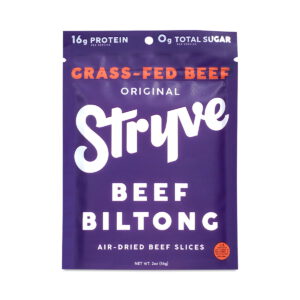- Understanding healthy eating principles
- Setting realistic goals
- Meal planning and preparation
- Mindful eating practices
- Staying motivated and accountable
- Overcoming common challenges
When embarking on your journey to make healthy eating a staple in your life, understanding how to navigate grocery shopping effectively is crucial. Whether you’re shopping online or in-store, making informed choices can significantly enhance your meal prep and overall nutrition.
Start with a well-organized list that focuses on whole foods. Fill your cart with items like:
- Fruits and vegetables: Opt for a colorful array such as spinach, kale, berries, and sweet potatoes. Seasonal produce from local farmers’ markets can offer freshness and support local economies.
- Whole grains: Choose options like quinoa, brown rice, and whole-wheat pasta for more fiber and nutrients.
- Healthy proteins: If you’re a vegan, incorporate beans, lentils, tofu, and tempeh into your meals. For omnivores, lean meats, fish, and eggs should be prioritized.
- Nuts and seeds: Almonds, chia seeds, and flaxseed are excellent sources of healthy fats.
- Dairy or dairy alternatives: If you consume dairy, look for low-fat options; for vegans, options like almond or oat milk are great. Check labels for added sugars.
For those on a budget, plan meals around weekly sales and local in-season produce. Canned or frozen fruits and vegetables can also be budget-friendly, while still providing essential nutrients. Look for organic options for items that you frequently consume and that retain pesticide residues, such as strawberries, apples, and bell peppers, to ensure you are practicing safety in your food choices.
As you shop online, be aware of safety measures to protect your data and ensure the quality of your products. Only make purchases from reputable sites that you trust. Check for reviews regarding the delivery of perishables to avoid receiving spoiled goods. Moreover, consider buying in bulk for staple items; this reduces packaging and often mitigates costs.
When choosing pre-packaged items, read the nutrition labels carefully and avoid products with long ingredient lists filled with preservatives and additives. Opt for those with fewer, recognizable ingredients, ensuring that you’re not compromising on your health amidst a busy lifestyle.
Lastly, having a well-stocked pantry with essential staples can streamline your healthy eating journey. Stock up on spices, oils, and condiments that enhance flavor without adding unhealthy ingredients. Items like olive oil, apple cider vinegar, and spices can make healthy dishes both enjoyable and satisfying.
By incorporating these tips into your grocery shopping routine, you’ll be well on your way to staying on track with your healthy eating goals, ensuring you have the right foundations for meal planning and preparation while supporting your busy lifestyle.
Setting realistic goals
Setting realistic goals is fundamental in establishing a sustainable approach to healthy eating. It is essential to recognize that gradual changes often lead to long-term success, as opposed to drastic alterations that can be overwhelming and lead to burnout. Setting goals should not only focus on outcomes but also consider the process involved in achieving them.
One effective method for setting achievable goals is to utilize the SMART criteria, which stands for Specific, Measurable, Achievable, Relevant, and Time-bound. This framework ensures that your goals are clearly defined and trackable. For example, instead of setting a vague goal like “I want to eat healthier,” a SMART goal would be “I will incorporate at least two servings of vegetables into my lunch every day for the next month.”
To further illustrate this, consider the following table comparing vague goals versus SMART goals in a healthy eating context:
| Vague Goals | SMART Goals |
|---|---|
| Eat more fruits | I will add one piece of fruit to my breakfast every morning for the next two weeks. |
| Cook healthy meals | I will prepare dinner at home for at least five nights a week for the next month. |
| Drink more water | I will drink at least eight 8-ounce glasses of water daily for the next month. |
| Eat less junk food | I will limit my consumption of processed snacks to one day per week for the next month. |
Another key aspect of setting realistic goals involves recognizing and adapting to your personal lifestyle and circumstances. For those leading a busy lifestyle, goals should consider time constraints, resources available, and personal preferences. If cooking every day seems impractical, focus on batch cooking or planning simple meals that require minimal preparation time.
It is also beneficial to celebrate small victories along the way. Setting incremental goals and recognizing your achievements fosters a sense of accomplishment that can motivate further progress. For instance, if your aim was to reduce sugary snacks, note your progress each week and reward yourself with non-food-related treats, such as a relaxing spa day or a new book.
Moreover, accountability plays a vital role in maintaining momentum. Sharing your goals with friends or family, or even joining a community group focused on healthy eating, can provide support and encouragement. Additionally, tracking your progress in a journal or digital app can help keep you engaged and allow you to adjust your goals as needed based on your experiences and evolving preferences.
By thoughtfully setting realistic goals that align with your lifestyle, you pave the way to a more enjoyable and sustainable approach to healthy eating, ultimately making it easier to stay on track amidst the demands of daily life.
Meal planning and preparation

When it comes to effectively shopping for healthy foods, having a strategic approach can make all the difference. Whether you prefer wandering the aisles of your local grocery store or navigating online stores, several tips can help you make the best choices for your meals.
Begin your shopping journey by sticking to a well-planned grocery list. This not only saves time but also helps in avoiding impulse buys that often lead to unhealthy choices. Prioritize healthy foods that provide nutritional value, focusing on:
- Fresh fruits and vegetables: Aim for a variety of colors and types. Local farmers’ markets can be a treasure trove of seasonal produce, offering freshness and promoting local agriculture.
- Whole grains: Look for quinoa, farro, and brown rice, which are rich in fiber and nutrients. These can serve as the foundation for many quick meals.
- Plant-based proteins: If you’re vegan or looking to reduce meat consumption, beans, lentils, chickpeas, and plant-based meat alternatives like Beyond Meat can add variety and satisfaction to your meals.
- Nuts and seeds: Almonds, walnuts, chia seeds, and pumpkin seeds are not only packed with healthy fats but also serve as great snacks and toppings for various dishes.
- Dairy alternatives: For those avoiding dairy, options like coconut, almond, or soy yogurt can provide similar benefits without added hormones, while also often being lower in sugar.
For budget-conscious shoppers, consider purchasing items that are in-season or on sale and plan your meals around them. Canned and frozen fruits and vegetables can be economical alternatives that maintain nutritional value, ensuring you don’t miss out on essential vitamins and minerals. For safer choices, prioritize organic produce when possible, especially for items recognized by the Environmental Working Group as having the highest pesticide residues, including strawberries, spinach, and kale.
If you opt for online shopping, always research the grocery store beforehand. Ensure they have good reviews regarding the quality of their perishable items. Many people find it valuable to read customer feedback about their delivery practices, especially when dealing with fresh produce and meats. Buying in bulk can also save you money on non-perishables, but be cautious about how long those items will last in your pantry.
When picking packaged goods, take a moment to examine the ingredient list. Generally, shorter lists with recognizable ingredients indicate better choices. Avoid items loaded with preservatives, artificial flavors, or excess sugars. It’s also wise to watch out for food safety—ensure that that the packaging is intact and not expired, particularly when purchasing items online.
Enhancing your pantry with essential ingredients simplifies meal prep. Stock up on items like olive oil, balsamic vinegar, low-sodium vegetable broth, and a variety of spices. These can elevate the simplest dishes from bland to flavorful without compromising your health. Creating a well-stocked pantry not only supports quick meal preparation but also encourages creativity in the kitchen.
Incorporating these tips into your grocery shopping routine will greatly assist in staying on track with your healthy eating goals while managing a busy lifestyle. With a mindful approach, it becomes easier to choose nutritious ingredients that cater to your dietary preferences and lifestyle needs.
Mindful eating practices
Engaging in mindful eating practices can significantly enhance your relationship with food and help you stay on track with your healthy eating goals. This approach encourages a deeper awareness of the eating experience, promoting habits that can lead to better choices and greater satisfaction.
One of the key components of mindful eating is paying attention to hunger and fullness cues. Listen to your body to determine when you are truly hungry versus when you might be eating out of boredom or emotional triggers. Practicing this awareness can help you avoid overeating and make more intentional food choices. Before reaching for a snack, ask yourself if you are genuinely hungry or if there’s another reason for your cravings. This reflection can guide you toward making healthier decisions.
Another important aspect of mindful eating is to create an environment conducive to eating. Eliminate distractions by turning off electronic devices and setting aside time dedicated solely to your meal. This allows you to focus on the flavors, textures, and aromas of your food, leading to a more enjoyable experience. When eating mindfully, put your utensils down between bites, and savor each mouthful. This practice can help you appreciate your food more deeply and recognize when you are satisfied, reducing the temptation to eat beyond fullness.
“Mindful eating is about being aware of the food you eat and the experience of eating it. It’s about being in the moment and enjoying every bite.”
Incorporating variety and balance into your meals can also enhance the practice of mindful eating. Aim to create visually appealing plates that include a colorful array of foods. This not only makes the meal more enjoyable but also encourages a well-rounded approach to nutrition. Experiment with new recipes that incorporate different ingredients, exposing yourself to diverse flavors and textures, making each meal an exploration rather than a chore.
Furthermore, take the time to reflect on your emotional relationship with food. Keeping a food journal can be a beneficial way to track your eating habits while noting the emotions that accompany them. Over time, patterns may emerge that can help you identify situations where you tend to eat mindlessly. By recognizing these triggers, you can develop healthier coping mechanisms for dealing with emotions that would otherwise lead to impulsive eating.
Lastly, practice gratitude for the food you consume. Before eating, take a moment to acknowledge where your food comes from, the effort that went into preparing it, and the nourishment it provides. This practice not only fosters a deeper appreciation for your meals but also encourages you to make more conscious choices about the foods you select, reinforcing your commitment to a healthy lifestyle.
By integrating mindful eating practices into your daily routine, you can cultivate a more positive attitude toward food, making it easier to maintain healthy eating habits and stay on track, even in the midst of a busy lifestyle.
Staying motivated and accountable
 The journey of staying motivated and accountable on your healthy eating path is essential for sustained success. Establishing a support system that resonates with your goals can significantly impact your journey. Sharing your intentions with friends and family creates a network of encouragement and insight, allowing for shared experiences and accountability. Consider initiating weekly check-ins, where you can share your successes and challenges. These discussions can not only motivate you but can also strengthen relationships as you work through the ups and downs of healthy eating together.
The journey of staying motivated and accountable on your healthy eating path is essential for sustained success. Establishing a support system that resonates with your goals can significantly impact your journey. Sharing your intentions with friends and family creates a network of encouragement and insight, allowing for shared experiences and accountability. Consider initiating weekly check-ins, where you can share your successes and challenges. These discussions can not only motivate you but can also strengthen relationships as you work through the ups and downs of healthy eating together.
Utilizing technology can further enhance your accountability. There are numerous apps available that allow you to track your meals, monitor progress, and set reminders for your healthy eating goals. By visually seeing your accomplishments and recognizing areas that need improvement, you can cultivate a sense of achievement that fuels your determination. Don’t underestimate the power of accountability groups—whether online or in-person, these communities foster a sense of belonging and support, allowing you to exchange tips, recipes, and encouragement.
Another impactful strategy to maintain motivation is to create a visual reminder of your goals. Vision boards, or even simple lists placed in visible spots around your home, can serve as constant reminders of why you embarked on this journey in the first place. Include photos of your healthy meals, inspiring quotes, or images reflecting your desired outcomes. The integration of these visual cues into your environment can keep you focused and inspired, even during moments of temptation.
As you progress in your healthy eating journey, acknowledge that setbacks are a natural part of the process. When faced with challenges, instead of viewing them as failures, reframe them as learning opportunities. Reflect on what led to the setback and consider how you can adjust your approach moving forward. This growth mindset cultivates resilience and helps you maintain a forward momentum despite obstacles.
Furthermore, consider incorporating small rewards for milestones you achieve along the way. This could be enjoying a new healthy recipe, purchasing a new kitchen gadget, or treating yourself to some leisure time. These rewards build positive reinforcement around your healthy eating habits and contribute to an enduring commitment.
Learning to overcome the mental hurdles of maintaining healthy eating amidst a busy lifestyle is a skill that develops over time. By continually seeking knowledge, strategies, and the support of those around you, you empower yourself to stay on track. Embrace the journey as a learning experience and take every opportunity to grow. The path to healthy eating is not solely about the food you consume; it’s about understanding your relationship with food and making choices that align with your values.
- What are some effective ways to stay motivated while eating healthy?
- Finding a support system, whether through friends, family, or an accountability group, can keep you motivated. Utilizing apps to track your progress and creating visual reminders of your goals can further enhance your commitment to healthy eating.
- How can I ensure I stay accountable to my healthy eating goals?
- Share your goals with those close to you and have regular check-ins to discuss progress. Additionally, consider joining online communities or local groups that focus on healthy eating for added support and motivation.
- What should I do if I experience setbacks in my healthy eating journey?
- Instead of being discouraged by setbacks, view them as opportunities to learn. Reflect on what caused the setback, adjust your strategies, and continue moving forward with your goals.
- How can I balance healthy eating with a busy lifestyle?
- Meal prepping in advance and creating quick, nutritious recipes can greatly ease the stress of eating healthy. Prioritize planning your grocery shopping around meals that fit your schedule.
- Are there specific apps you recommend for tracking healthy eating?
- Popular apps like MyFitnessPal, Lose It!, or Noom can help you track meals, monitor progress, and receive personalized insights to stay on track with your eating habits.
- What kind of rewards should I set for achieving my healthy eating goals?
- Rewards can be non-food related, such as enjoying a day out, buying new workout gear, or pampering yourself with a massage. Celebrating milestones reinforces your commitment to healthy eating.
- How can I make healthy eating easier for myself?
- Stocking your pantry with wholesome staples, grocery shopping with a list, and planning meals ahead of time can simplify healthy eating. The easier you make it, the more likely you are to maintain your goals.
Overcoming common challenges
When it comes to grocery shopping, overcoming common challenges can be an adventure in itself, especially for families, busy professionals, and fitness enthusiasts alike. Establishing a plan can make the process enjoyable and efficient.
Start by creating a grocery list based on your meal plan for the week. This will streamline your shopping experience, ensuring that you focus on purchasing only the items you need for healthy meals, drastically reducing impulse buys. To spice things up, consider categorizing the list by store section: produce, grains, proteins, and dairy alternatives. This method can help you save time while navigating through the store and keep you focused on healthy options.
For fresh produce, always check local farmers’ markets or co-ops. Not only can you find seasonal fruits and vegetables, but supporting your local economy is a wonderful bonus. For example, if you’re in the height of summer, look for fresh tomatoes, cucumbers, and blueberries. Recipes for salads, smoothies, and salsas can be built around these vibrant colors, fueling your body with essential nutrients while adding zest to every meal.
For those following a vegan lifestyle, stock up on versatile plant-based proteins such as lentils, black beans, and chickpeas. These can be used in a variety of dishes—from hearty stews to refreshing salads. If you’re watching your budget, purchase dry beans and legumes in bulk, which are often more economical than canned varieties and allow for more control over sodium levels.
- Healthy snacks: Don’t forget to equip your pantry with healthy snack options such as air-popped popcorn, nuts, and whole-grain crackers. They can help curb unhealthy cravings and keep you energized throughout your busy day.
- Frozen foods: Frozen fruits and vegetables retain their nutrients and can be just as beneficial as their fresh counterparts. Using these in smoothies or stir-fries can save time, especially during hectic weeks.
When it comes to packaged foods, make it a habit to read labels carefully. Opt for products with recognizable ingredients, and avoid those containing high amounts of preservatives or added sugars. Additionally, having a list of healthy brands you trust can make this process smoother and quicker.
As for the online shopping experience, consider leveraging customer reviews and ratings before purchasing perishable items. Many platforms have options for grocery pickups or deliveries which can save you time. Just ensure you are aware of their delivery windows to avoid receiving spoiled goods. Make sure your online transactions are secure and that you’re using reputable sites for your grocery needs.
Incorporating these strategies into your grocery shopping routine not only helps you stay on track with healthy eating but also simplifies your decision-making process. By being intentional about what goes into your cart, you empower yourself to make choices that align with your dietary and lifestyle goals, allowing you to thrive even amidst a busy schedule.
New Customers Offer!
Free Gift for the new customer
$24 Value, When You Subscrib Visit Thrive Market












